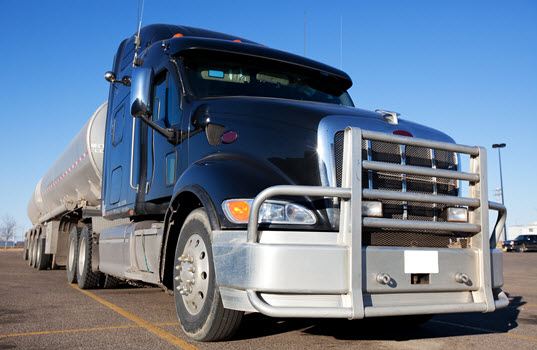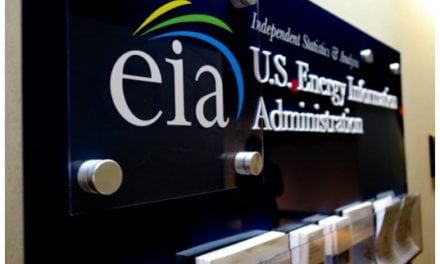By Brian Holland, Fleet Advantage
Truck attainment has been a main challenge for private fleets, for-hire carriers and associations that rely on trucking across many industries, including energy, manufacturing, construction, and retail. This challenge has been highlighted by the backlog of orders for Class-8 heavy-duty trucks, largely from an American Economy that has been wholesome and resilient ever since the Great Recession ended in 2010, and a decrepit industry philosophy toward truck attainment which is now fluctuating.
Class-8 truck orders and sales continued at a healthy pace through much of 2018, as many companies saw the need to upgrade into newer equipment or add to their equipment to handle the boosted demand in shipping goods via the nation’s economic activity. According to ACT Research, Class-8 net orders equaled 506,300 units at the end of November, the second-strongest 12-month order period in history, trailing only the 12-month period ending October.
Monthly orders (28,082) still outperform the number of units being manufactured (27,973) as of November, and while this breach is narrowing it continues to show astronomical demand for new trucks.
Specifically, organizations will continue to feel the effects of an order backlog into 2019 as long as they continue their asset attainment strategy based on functional obsolescence versus economic obsolescence. Corporations that shorten their asset management lifecycles based on a flexible lease model will be able to plan their substitutions better and thus avoid the discomfort associated with the current backlog.
The frenzied economy means that more companies are shipping materials to job sites or goods across the country; more businesses are in need of re-stocking shelves and inventory; more consumers are in need of goods ordered online and thus the transport of those shipments; and as a result, trucks are working strenuously.
Trucks and transportation have been the lifeblood of this economic machine.
Replacement and truck obtainment strategies that help the economy stay active need to be carefully deliberated as we continue into 2019 when companies take a closer look at their bottom line.
The long-standing business objective was for organizations to make hefty purchase orders of trucks, while driving them for anywhere between five to upwards of ten years of service, to squeeze every cent out of the truck’s usage. However, data and analytics are proving this model to be costly and unproductive. Instead, private fleets and for-hire carriers are grasping they can achieve more savings on the truck’s overall impact to the bottom line, as well as maintenance & repair (M&R) – the highest inconsistent and volatile cost of a fleet operation by moving to a shorter lifecycle.
When companies drive their trucks as long as possible, they run on functional obsolescence – making verdicts based on the truck’s ability to stay on the road. In most cases, when firms let the truck decree the timetable for replacement, firms are left struggling to order a new truck based off limited planning cycles. Today’s backlog of truck orders is a result of this, as the multiplier effect of many transportation firms and this ideology have caught up to them.
Instead, today’s leading firms are taking a distinctive approach.
Establishments are now paying closer attention to a truck’s individual TIPPINGPOINT® [Editor: as branded by FleetAdvantage], the point at which it costs more to operate a truck than it does to replace it with a newer model. Aspects such as the cost of fuel, utilization, finance costs, and M&R, are all factored into arriving at each truck’s unique TIPPINGPOINT®, giving fleet operations laborers and finance departments a closer look based on data and analytics into determining and calculating the finest time to replace an aging truck.
For example, a recent analysis of long-term ownership compared to shorter lifecycle management clarifies a significant cost savings over time. A fleet that opted for a four-year lease model on a truck would save almost $27,893 per truck in comparison to a seven-year ownership model because of the aforementioned factors such as fuel, utilization, financing, and M&R. The shorter lease model is also cost-effective when compared to just a four-year ownership model, showing average savings of $12,710.
This approach offers flexibility to adjust to changing markets, ultimately driving down operating costs while reinforcing a positive corporate image, driver recruitment and retention efforts by continuously upgrading to newer trucks. Companies are leveraging data analytics and comprehensive fleet studies that produce a fleet modernization and utilization plan, projecting when aging equipment will need to be replaced. This is especially effective with today’s fluctuating demand and the current booming economy as companies trying to acquire equipment solely based on demand are faced with equipment shortages and long lead times.
Just as significant, recent alterations to the corporate tax rate, as well as new accounting standards, have made it more attractive to lease equipment. With these changes, at least in the case of truck acquisition, purchase of equipment remains more expensive than shorter-term leasing the equipment. What’s more, leasing remains the preferred method for companies regardless if they have a stronger or weaker balance sheet. In addition, leasing also allows companies to evade the risk of residual value and the expense of remarketing.
By adopting this new approach of shorter truck lifecycles, industry organizations and transportation corporations will become better equipped at exchanging their aging truck fleets in a more cost-efficient manner as we continue into 2019.
 Brian Holland is President and Chief Financial Officer at Fleet Advantage, a leading innovator in truck fleet business analytics, equipment financing and lifecycle cost management. For more information visit www.FleetAdvantage.com.
Brian Holland is President and Chief Financial Officer at Fleet Advantage, a leading innovator in truck fleet business analytics, equipment financing and lifecycle cost management. For more information visit www.FleetAdvantage.com.








